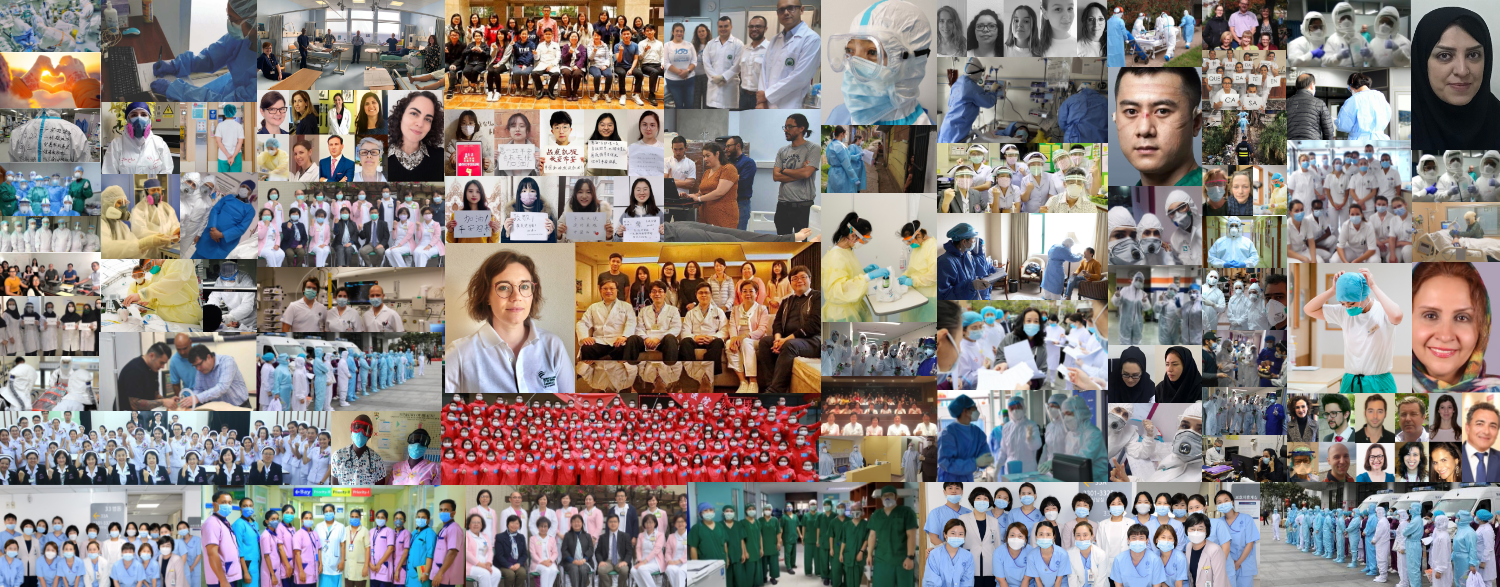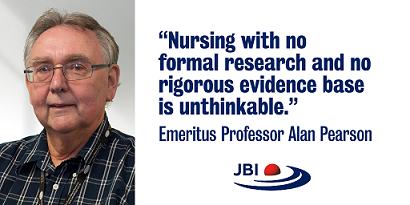
The importance of evidence-based nursing in 2020
An interview with Emeritus Professor Alan Pearson
As nursing globally embraces the 200th anniversary of the birth of Florence Nightingale, and acknowledges her role in utilising systematic research to improve patient outcomes, JBI reflects on its origins as the ‘Joanna Briggs Institute for Evidence Based Nursing’ and the continuing importance, 25 years on, of evidence-based nursing research and clinical practice.
Nurses play an important role in tackling public health challenges in health systems across the world, especially notable during the current global COVID-19 pandemic. Nurses form the largest component of the health workforce and are key actors in delivering effective, patient-centred healthcare services. Due to the nature of nurses’ work, they have strong engagement with healthcare consumers, family members, and other healthcare professionals; often as the coordinators of care.
Quality healthcare services require that clinical decision-making in nursing are based on evidence, particularly in standardising and aligning healthcare practices with evidence at the point of care. JBI was founded by Emeritus Professor Alan Pearson to address this very need. On this International Nurses Day we speak with Prof Pearson about both the past and future of Evidence-based Nursing.
Q: Going back to your motivation for starting JBI and the vision for establishing an evidence base for nursing research and practice, in particular the application of research to nursing clinical practice, how far do you think we have come (as a global evidence community) in achieving your vision?
A: I think that the concept of EBP (i.e. basing practice on the best available evidence) is now well known in nursing internationally. I am, however, not so sure that it is universally understood. When I was involved in setting up JBI in the 1990’s, EBM was increasingly adopted across the world, but EBN was in its infancy. Since then, I think that JBI has played a stellar role in both developing great models and systems to support the implementation of evidence into Nursing practice. I would say that the vision that we had for JBI in the early days has, to a large extent, been realised; a strong international collaboration; a growing library of systematic reviews; a range of sophisticated online tools; and a fantastic global program that trains people to undertake systematic reviews and to implement evidence.
Q: Reflecting on your experience as a nurse, Australia’s first Professor of Nursing and in your role as JBI Executive Director for almost 20 years, what were some of the big successes that you witnessed in the transition to evidence-based practice in Nursing?
A: There have been many successes – some global; most local and contextual - and It is difficult to pick out one or two examples. I think that, at a global level, the development of systems/tools to advance EBN (such as the SUMARI system for conducting systematic reviews of diverse forms of evidence and the PACES system for implementing evidence into policy and practice) represent an amazing success. More locally, the numerous projects where evidence has been implemented in hundreds of hospitals by the thousands of JBI Clinical Fellows demonstrate concrete examples of successfully changing practice for the better.

Q: During the WHO Year of the Nurse and Midwife there has been a call to invest in nurses and midwives as a part of their commitment to health for all. In your opinion what would this investment look like for evidence-based nursing research and clinical practice in 2020?
A: As a nurse, I am biased of course; but nurses and midwives are the glue that hold together the healthcare team; they are the largest workforce in health; and they have, since the time of Nightingale, always focused of the patient/client as a whole person. For many years, nursing practice was, however, very much based on tradition and routine. Formal nursing research was virtually non-existent in my early training days and thus the evidence base for nursing was largely based on trial and error and on handed down traditions and dogma. Health systems without nurses and midwives are inconceivable; and now, I think nursing with no formal research and no rigorous evidence base is unthinkable.
Investing in nurses and midwives to improve their contribution to health for all must relate to increasing high quality nursing research; and in improving, and providing access for nurses, to high quality evidence-based decision-making systems.
Q: Finally, we understand that there is not a magic bullet for getting research evidence into practice, however where do you see opportunities for today’s nurses (or nurse leaders) in closing the evidence-practice gap and contributing to the science of nursing?
A: Getting evidence into action will always be a challenge – partly because nurses are busy people and it is easier to practice in ways you are familiar than to changing things in light of new evidence. How to change nursing practice has always been my preoccupation (indeed, it was the focus of my PhD thesis, submitted nearly 40 years ago!). I would like to say that I know the answer – but I don’t! Changing practice is hard, but I suspect that the secret lies in the ability and commitment of nurses who want to be agents of change.
As for the development of nursing science, I am constantly amazed at the advancement of nursing science across the world. There are now numerous nursing scholars diligently researching nursing as an activity and intervention as PhD students or as career researchers, and that is a reassuring trend.